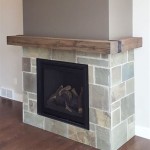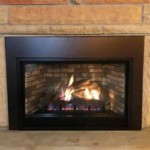Remote Control Systems for Gas Fireplaces: Functionality, Benefits, and Considerations
Remote control systems for gas fireplaces have become increasingly prevalent, offering a convenient and efficient method for managing fireplace operation. These systems provide users with the ability to ignite, extinguish, and modulate flame height from a distance, enhancing comfort and control over their home heating environment. Understanding the features, benefits, and considerations associated with these remote control systems is crucial for making informed purchasing and usage decisions.
The market for gas fireplace remote controls includes a variety of models, ranging from basic on/off switches to sophisticated programmable thermostats. These systems typically consist of a handheld remote unit, a receiver module installed within or near the fireplace, and wiring connecting the receiver to the fireplace's gas valve. The functionality and features of these systems vary depending on the price point and intended application. This article will explore the key aspects of gas fireplace remote control systems, including their common types, operational principles, advantages, potential issues, and essential safety guidelines.
Types of Gas Fireplace Remote Control Systems
Gas fireplace remote control systems are generally categorized into several types, each offering a distinct level of functionality. These categories can be loosely grouped as millivolt systems, electronic ignition systems, and programmable thermostat systems. Understanding the differences between these types is essential for selecting the appropriate remote control system for a given gas fireplace.
Millivolt Systems: Millivolt systems represent a traditional approach to gas fireplace control. These systems rely on a thermopile, which generates a small electrical current (millivolts) when heated by the pilot flame. This millivolt current is then used to operate the main gas valve. Remote control systems for millivolt fireplaces typically include a simple on/off switch that interrupts or completes the electrical circuit, controlling the gas flow to the main burner. Millivolt systems are known for their reliability and independence from external power sources, allowing the fireplace to operate even during power outages. Remote control upgrades for these systems are often straightforward, involving the installation of a receiver and a compatible remote.
Electronic Ignition Systems: Electronic ignition systems, also known as intermittent pilot ignition (IPI) or direct spark ignition (DSI) systems, utilize electronic components to ignite the gas. These systems require an external power source, typically 120V AC, to operate. When the fireplace is activated, an electronic igniter produces a spark that ignites the gas, eliminating the need for a continuously burning pilot light. Remote control systems for electronic ignition fireplaces usually offer more features than those for millivolt systems, including flame height adjustment and timer functions. The remote communicates with a receiver that controls the electronic ignition module and gas valve.
Programmable Thermostat Systems: Programmable thermostat systems offer the highest level of control and automation. These systems allow users to set desired room temperatures and create heating schedules, automatically adjusting the fireplace's operation to maintain the set temperature. Programmable remote controls typically feature LCD screens, intuitive interfaces, and advanced settings. The receiver module communicates with the remote to monitor room temperature and adjust the gas valve accordingly. These systems often incorporate safety features, such as automatic shut-off in case of overheating or malfunction.
Choosing the correct remote control system is contingent on the compatibility with the existing fireplace’s control system. It is generally best practice to thoroughly examine the fireplace manufacturer's specifications to determine the most suitable type of remote control system.
Benefits of Using a Remote Control for a Gas Fireplace
The implementation of a remote control system for a gas fireplace presents numerous advantages that can significantly enhance the user experience. These benefits include improved convenience, energy efficiency, enhanced safety, and increased accessibility for individuals with mobility challenges.
Convenience: The most apparent benefit of a gas fireplace remote control is the increased convenience it offers. Users can ignite or extinguish the fireplace, adjust the flame height, and set temperature without having to physically approach the unit. This is particularly useful in large rooms or when attempting to make adjustments from another location within the home. For individuals who enjoy entertaining, a remote control allows for quick adjustments to the fireplace settings, ensuring optimal comfort for guests.
Energy Efficiency: Certain remote control systems, particularly those with programmable thermostat capabilities, can significantly improve energy efficiency. By allowing users to schedule heating cycles or automatically adjust the flame height based on room temperature, these systems prevent the fireplace from operating unnecessarily, reducing gas consumption and lowering energy bills. Programmable remotes also allow users to turn off the fireplace when leaving the room, preventing heat loss and conserving energy.
Enhanced Safety: Remote control systems can also contribute to enhanced safety, especially for individuals with limited mobility or dexterity. Operating the fireplace from a distance eliminates the need to bend or reach to access the controls, reducing the risk of accidents. Additionally, some remote control systems incorporate safety features such as automatic shut-off timers and child safety locks, providing peace of mind.
Accessibility: For elderly individuals or those with disabilities, a gas fireplace remote control can significantly improve accessibility and independence. The ability to operate the fireplace from a comfortable position eliminates the physical challenges associated with manual controls, allowing individuals to enjoy the warmth and ambiance of a fireplace without difficulty.
In summary, the implementation of a suitable remote control system provides tangible gains for homeowners, transforming the fireplace into an accessible and user-friendly heating amenity.
Potential Issues and Maintenance Considerations
While gas fireplace remote control systems offer numerous benefits, they are not immune to potential issues. Understanding these issues and implementing proper maintenance practices is critical for ensuring the longevity and reliable operation of the system. Common problems include battery issues, signal interference, receiver malfunction, and gas valve issues. A regular maintenance schedule is crucial to mitigate potential issues.
Battery Issues: Remote controls and receiver modules typically rely on batteries for power, and battery-related problems are a common source of malfunctions. Weak or dead batteries can cause the remote to function erratically or not at all. It is essential to replace batteries regularly, following the manufacturer's recommendations. Using high-quality batteries can extend their lifespan and improve the reliability of the remote control system. Leaving batteries in the remote or receiver for extended periods without use can lead to corrosion and damage. Therefore, removing batteries during periods of inactivity is advisable.
Signal Interference: Remote control systems operate using radio frequencies (RF), and signal interference from other electronic devices can disrupt communication between the remote and the receiver. Common sources of interference include cordless phones, wireless routers, and other RF-emitting devices. Repositioning the remote receiver or the interfering device may help to mitigate signal interference. Some remote control systems utilize multiple channels or frequencies to minimize interference and ensure reliable operation.
Receiver Malfunction: The receiver module, which is responsible for receiving signals from the remote and controlling the gas valve, is a critical component of the remote control system. Receiver malfunctions can result in the fireplace failing to ignite, turning off unexpectedly, or not responding to remote commands. In some cases, receiver issues can be resolved by resetting the unit or checking the wiring connections. If the receiver is damaged or faulty, it may need to be replaced. It is best to consult with a qualified technician to diagnose and repair receiver problems.
Gas Valve Issues: Although less common, problems with the gas valve can also affect the operation of the remote-controlled fireplace. A malfunctioning gas valve may prevent the fireplace from igniting, cause erratic flame behavior, or result in gas leaks. Gas valve issues should be addressed immediately by a qualified technician, as they pose a significant safety risk. Regular inspection and maintenance of the gas valve can help prevent these problems.
To ensure the continued functioning of a gas fireplace remote control system, it is necessary to implement a robust preventative maintenance routine. This routine should involve frequent assessment of battery performance, investigation of potential signal disruptions, and skilled examination of the receiver function and gas valve system.

Gas Fireplace Remotes More Fireplaceremotecontrols Com

Gas Fireplace Remote Control Guide Fireplaces Direct Learning Center

Skytech Manual Remote Control With Timer For Gas Logs Fine S

Sit Gas Fireplace Or Stove Remote Control Wall Bracket Hechler S Mainstreet Hearth Home Troy Missouri

Rfc Model Fireplace Remote Control Grand Mate Noted Accessories Supplier

Gas Fireplace Remote Control Guide Fireplaces Direct Learning Center

Fireplace Remote Control How To S Spotix Blog

How To Use And Maintain Your Gas Stove Chesneys

Everwarm Thermostat Rermote Control For Gas Logs Fine S

Skytech 1001th Thermostat Fireplace Remote Control
Related Posts








